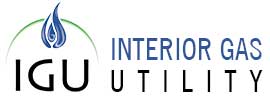I would suggest a look at the white papers, written by staff members, located at www.arcticgas.gov. One, titled “Guide to Alaska natural gas projects” by Bill White, gives a current view of what lies ahead in regards to replacing all our energy fuels with Prudhoe Bay natural gas. Another, titled “Liquefaction plant single largest cost for Alaska LNG project” by Stan Jones, tells us about the mammoth sizes and costs expected for the project.
I will cite dates and costs found in these white papers.
2016: The Interior Energy Project, which will truck liquefied natural gas (LNG) from Prudhoe Bay, expects to begin delivery. MWH Americas Inc. has the contract to build the treatment plant at Prudhoe Bay and to provide engineering expertise. The two utilities, Fairbanks Natural Gas and the Interior Gas Utility, will have distribution systems completed. The largest customer would be GVEA. At a recent town hall meeting speakers declared that the delivery system may not be completed until 2018.
The Alaska Stand Alone Pipeline (ASAP) will make a decision on whether to build a pipeline to Beluga (Tyonek). If approved, the construction will be completed in 2020.
2018: Interior Energy Project completed.
2019: ASAP pipeline to Fairbanks area begins delivery, if approved for construction in 2016.
The LNG Export Project will decide whether or not to build their pipeline.
2020: ASAP pipeline to Anchorage area begins delivery, if approved in 2016. The Cook Inlet natural gas sources reach a critical stage and will be unable to satisfy demand from the Anchorage area and also Kenai Peninsula. A supplemental source will be necessary.
2025: The LNG Export Project begins delivery to the Nikiski LNG docks, if approved for construction in 2019.
In past columns I told about the extremely poor quality of the Prudhoe Bay natural gas. The 24 percent of impurities in the gas — which includes 12 percent carbon dioxide — brings the methane content down to 76 percent. All of the above projects require a gas treatment plant at Prudhoe Bay that would essentially extract all the carbon dioxide and almost all of the other impurities before shipment. These treatment plants, although differing in size, are all expensive and will drive the price of delivered gas up.
The sponsors for the LNG Export Project — Exxon Mobil, BP, ConocoPhillips, and TransCanada — have declared a cost estimate of tens of billions of dollars to complete their project. The estimates range from $38 billion to $50 billion.
This is an election year and we all have a list of candidates to look at before voting. I would suggest that we select candidates that convince us that they will positively work on assisting the above projects along toward completion.
As you can see, each of the projects should be approved for construction because they each satisfy a particular need.
Our local administrations should be involved with the utilities now in an effort to streamline the change from each of our present heating methods over to natural gas heating and cooking. For example, a conventional fuel oil boiler cannot be converted to natural gas, so full scale change is necessary. Each of us would have to research the cost to do this. We all have to start the process now.
Herbert Butler is a Fairbanks resident and retired technician and supervisor in the oil industry. He formerly worked for the Alyeska Pipeline Service Company, ARCO, and Williams Alaska.
